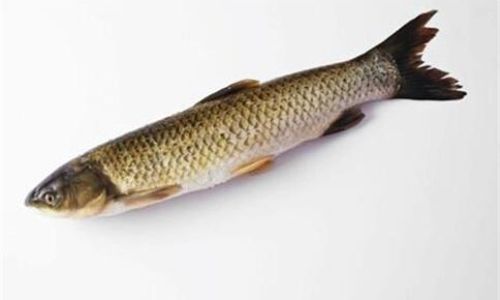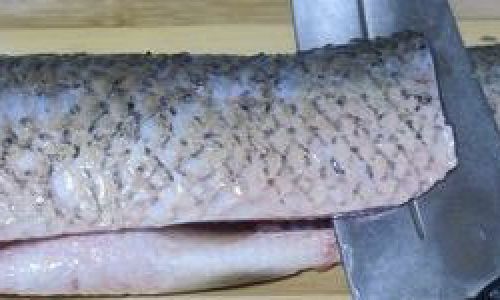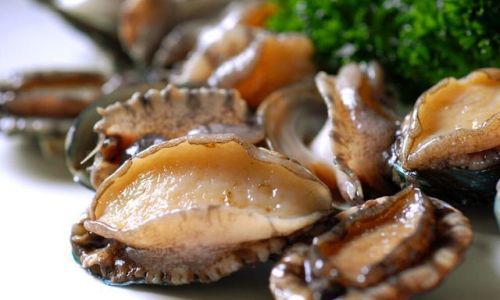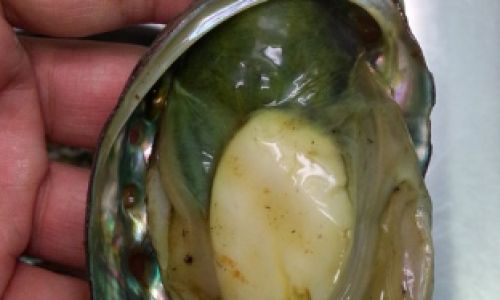Introduction
Grass carp (Ctenopharyngodon idella), a freshwater giant native to Asia, has become a culinary staple worldwide due to its mild, sweet flesh and adaptability in dishes ranging from soups to stir-fries. Properly slicing this fish is not merely a culinary skill but an art form that enhances texture, presentation, and cooking efficiency. Whether preparing fillets for pan-frying, steaks for grilling, or paper-thin slices for hotpot, mastering the slicing technique ensures minimal waste and maximum flavor. This guide delves into the anatomy of grass carp, essential tools, step-by-step methods, and expert tips to transform this freshwater behemoth into restaurant-quality cuts.
Understanding Grass Carp Anatomy
Before wielding a knife, familiarize yourself with the fish’s structure. Grass carp can exceed 3 feet in length and weigh over 40 pounds, with a robust, cylindrical body covered in large, cycloid scales. Their flesh is firm yet tender, with a single row of intramuscular bones (Y-bones) running along the lateral line. These bones, while edible when cooked, require careful removal during slicing to avoid choking hazards. The fish’s backbone is thick, and the belly flaps are thin—a detail crucial for adjusting knife angles.
Essential Tools for Slicing

- Knife Selection: A 8–10-inch flexible fillet knife with a narrow, curved blade is ideal for navigating around bones and skin. For steaks, a sturdy chef’s knife (8 inches) ensures clean cuts.
- Cutting Board: Non-porous, food-grade plastic or bamboo boards prevent bacterial growth and provide stability.
- Fish Scaler: A serrated metal tool or the back of a knife removes scales efficiently.
- Tweezers: Needle-nose tweezers extract residual pin bones.
- Gloves (Optional): Non-slip, cut-resistant gloves enhance grip and safety.
Preparation: Cleaning and Scaling
- Scaling:
- Place the fish on its side. Hold the tail firmly and scrape from tail to head against the grain of scales.
- Rinse under cold water to remove dislodged scales. Repeat on the opposite side.
- Gutting:
- Insert the knife tip into the ventral cavity (below the head) and slice toward the tail, avoiding piercing organs.
- Spread the cavity open and remove internal organs. Discard gills, which impart bitterness.
- Rinsing:
Thoroughly rinse the cavity and exterior under cold water to eliminate blood and slime.
Slicing Techniques
Filleting for Boneless Cuts
Ideal for: Pan-searing, baking, or tacos.
Step 1: Head Removal (Optional)

- For easier handling, sever the head just behind the gills using a sharp chef’s knife.
Step 2: Initial Dorsal Incision
- Lay the fish belly-down. Make a shallow cut along the dorsal fin from tail to head, angling the blade toward the backbone.
Step 3: Separating Fillets
- Slide the knife along the backbone, keeping the blade flush against bones. Use gentle, sawing motions to release the fillet from ribs.
- Repeat on the opposite side.
Step 4: Rib Removal
- Flip the fillet skin-side down. Locate the rib cage (a V-shaped bone cluster) and slice diagonally to detach it, leaving the belly flap intact.
Step 5: Skinning
- Hold the tail end’s skin taut. Glide the knife between flesh and skin at a 15-degree angle, pulling the skin backward as you cut.
Step 6: Pin Bone Extraction

- Run your fingertips along the fillet’s center to locate Y-bones. Use tweezers to pluck them out from the meat side.
Steak Slicing
Ideal for: Grilling, broiling, or braising.
Step 1: Cross-Sectional Cuts
- With the fish whole or halved, make perpendicular cuts 1–2 inches thick, starting from the tail.
- Angle the knife slightly inward to avoid the backbone, creating thick, even steaks.
Step 2: Bone-In Presentation
- Leave the central bone intact for steaks, as it imparts flavor during cooking.
Ultra-Thin Slicing (For Sashimi or Hotpot)
Ideal for: Raw preparations or quick-cooking dishes.
Step 1: Partial Freezing

- Chill the fillet in the freezer for 20–30 minutes to firm the flesh for easier slicing.
Step 2: Angled Cuts
- Hold the knife at a 10–15-degree angle and slice against the grain in smooth, fluid motions.
- Aim for 1/8-inch thickness, ensuring each slice is translucent.
Butterfly Slicing
Ideal for: Stuffed or rolled preparations.
Step 1: Horizontal Incision
- Lay the fillet skin-side down. Make a horizontal cut three-quarters through the flesh, parallel to the cutting board.
Step 2: Unfolding
- Gently spread the fillet open like a book, creating a pocket for fillings.
Advanced Techniques and Tips

- Knife Maintenance: Sharpen blades before each use; a dull knife crushes flesh, causing texture loss.
- Bone Utilization: Simmer the carcass for 2 hours to create a rich fish stock.
- Texture Control: Thicker slices retain moisture during high-heat cooking; thin slices cook rapidly in broths.
- Safety: Curl fingers inward (the “claw grip”) to prevent accidental cuts.
Common Mistakes and Solutions
- Uneven Thickness: Use a ruler for initial cuts until eye-hand coordination improves.
- Meat Wastage: Save trimmings for fishcakes or dumplings.
- Bony Fillets: Freeze fillets for 10 minutes to make bones more visible under light.
- Skin Shredding: Ensure the knife is sharp and maintain a consistent angle during skinning.
Storage and Freshness
- Refrigeration: Wrap sliced fish in parchment paper, then plastic; consume within 24 hours.
- Freezing: Vacuum-seal portions to prevent freezer burn; thaw in the refrigerator overnight.
- Freshness Test: Press the flesh; if it springs back, it’s fresh. Dull eyes or an ammonia odor indicate spoilage.
Culinary Applications
- Stir-Fried Slices: Marinate thin slices in soy sauce, cornstarch, and Shaoxing wine before stir-frying.
- Steamed Fillets: Top with ginger, scallions, and sesame oil for a classic Cantonese dish.
- Grilled Steaks: Marinate in miso and mirin for umami-rich flavor.
Conclusion
Slicing grass carp is a blend of precision and respect for the ingredient. By understanding its anatomy, wielding the right tools, and practicing patience, even novices can elevate their kitchen prowess. Whether you’re crafting sushi-grade slices or hearty steaks, this guide ensures your grass carp dishes are as visually stunning as they are delicious. Remember, mastery comes with repetition—so slice, savor, and refine your technique with every fish.






0 comments